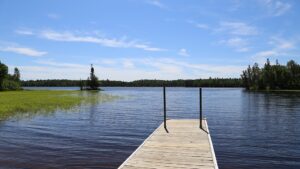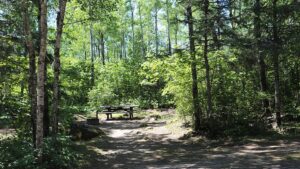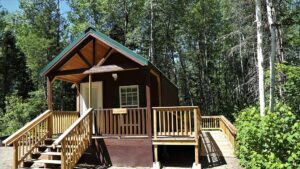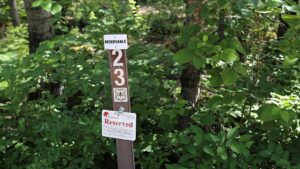This summer, camping in northern Minnesota and along Lake Superior seemed like the perfect way to take a break and stay a safe social distance away from others as we continued to live with a pandemic. It was not an original idea. Once the state parks re-opened, hoards of new as well as loyal campers filled the sites reserving every last opening in the state park system for the duration of the camping season. How does one discover this? By trying to book a site in any of the state parks directly. That was my experience.
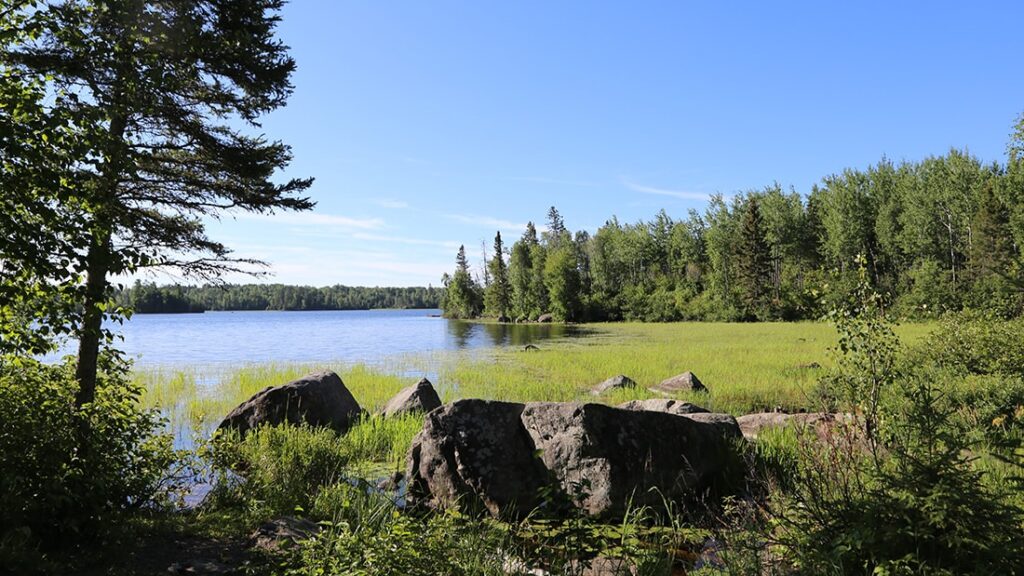
Thus, it was a relief to discover the U.S. Forest Service campgrounds near the Boundary Waters. I chose Birch Lake, near many of the bordering lakes of the northwoods in the Superior National Forest. To book a space, I accessed the National Reservation system for the U.S. Forest Service online to get a feel for the options, then waited on the phone for a reservation agent to personally book it for me. The only challenge there was being willing to wait on the phone. The rest was easy.
Finding a spot to set up the tent was not difficult. A corner of a large lot, closest to a view of Birch Lake through the trees, suited me just fine. The fire rings and full load of wood made available for a group could wait for the next visitor.
While assembling the tent, I was feeling grateful for the excellent recommendation to purchase it twenty years ago. It has provided shelter on many memorable experiences near the lakes, rivers and forests of northern Minnesota. Lightweight, rain-proof and just big enough. Its key attribute was the grand view it offered of one of the best assets of camping in the North Woods – the constellations in the Dark Sky. (The Boundary Waters Canoe Area Wilderness recently earned the official designation as a Dark Sky Sanctuary.) Fortunately, a clear night meant the nylon cover could be removed – leaving nothing but a fine mesh netting between me and all of the celestial wonders up above. Crystals sparkled in streaks and arcs. Stardust danced in every direction.
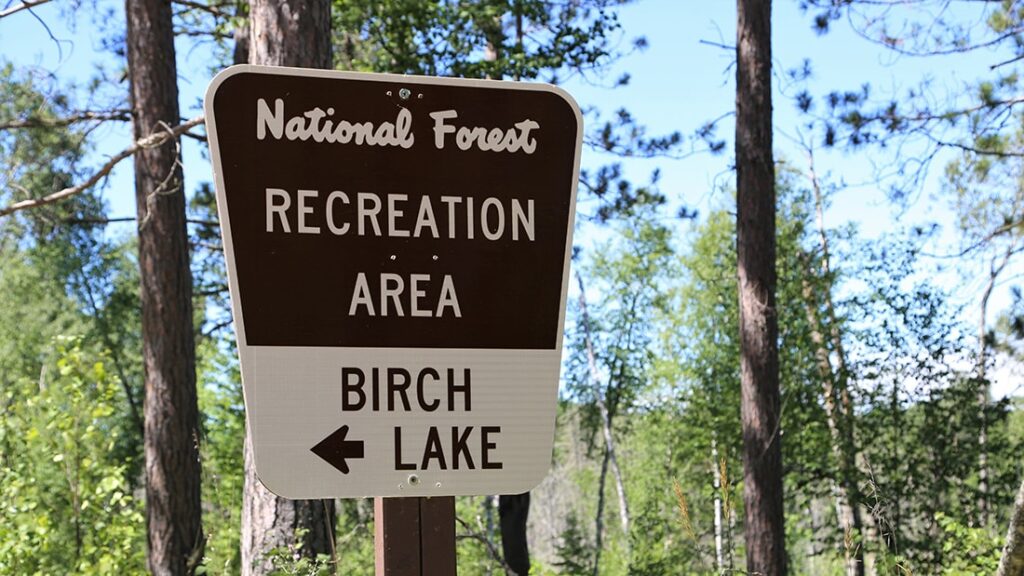
As the stillness of the night settled in, the residents of Birch Lake began to sing out in greeting. First came the tremolo calls of the loons. On cue, the pair on the southwest corner of the lake continued with their nightly check-ins. Whether it was a friendly “Goodnight, John Boy” or a cautionary call after sensing a predator, I am not sure. I hoped my presence posed no sign of danger for them on what seemed like a perfect night.
Next, came the high-pitched trill of the crickets. Like a bow that slowly moves across a violin’s strings, their presence underscored the evening. To complement their neighbors, the katydids mixed in their own late summer stridulations. These were familiar nocturnal sounds to a gal from the Midwest and soon lulled a tired traveller into slumber … though not for long.
The next stanza featured the high-pitched trill of the Grey Tree Frogs, repeatedly. Interspersed between the tree frogs, the boreal chorus frogs contributed with their raspy clicker-like vocals. And, of course, the bass line. One can never forget the American Toad. Deeper into the land, a Great Horned Owl murmured softly.
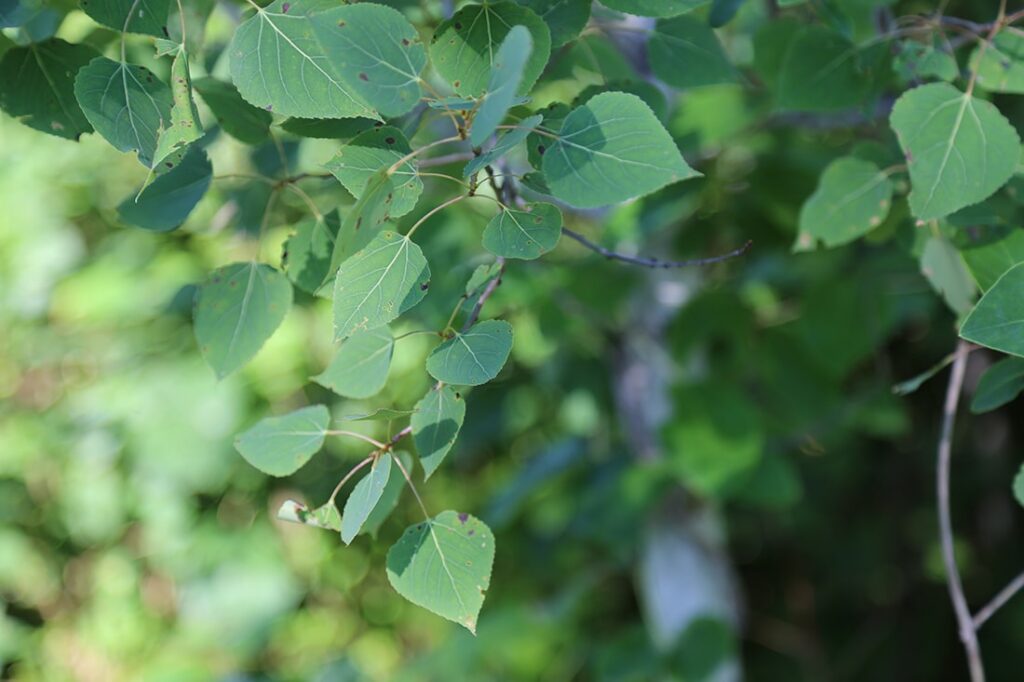
As morning dawned on Birch Lake, the birds chimed in, singing and chatting up a storm. Fully leaved birch and aspen trees made it difficult to see them flit from branch to branch. I am guessing I was listening to the sedge wren, the evening grosbeak, the boreal chickadee, the three-toed woodpecker and the mourning dove. Perhaps some post-breeding warblers were in the mix as well, as they geared up to start their journey back.
With a fresh thermos of coffee and camera in tow, it was time to explore the home of the frogs and toads who had serenaded me throughout the night. Just a brief walk down a winding path and a strategic step or two across several rocks in the water led to a large boulder. A perfect spot for a sun bath while taking in a beautiful, natural pocket of this 21-mile long lake.
Glistening, the water rolled through the reeds and lapped the shoreline as the silhouette of a fisherman in his flat-bottom boat passed in the distance. The lily pads gently skimmed along the surface of the ripples. Peeking out through the reeds, a yellow-pond lily made itself known. Then another, and another.

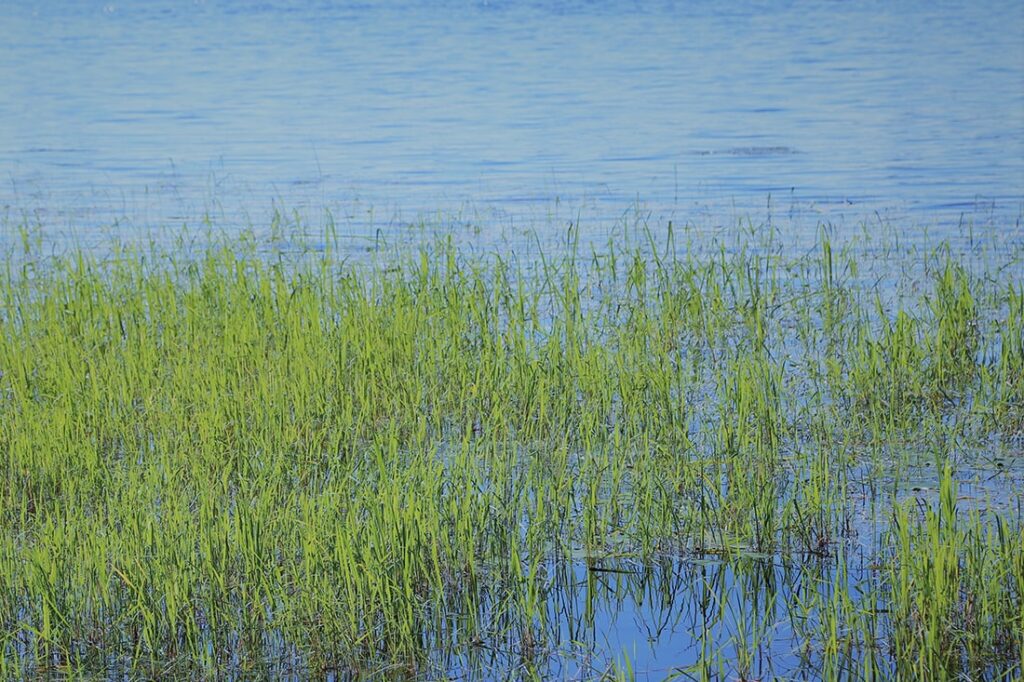
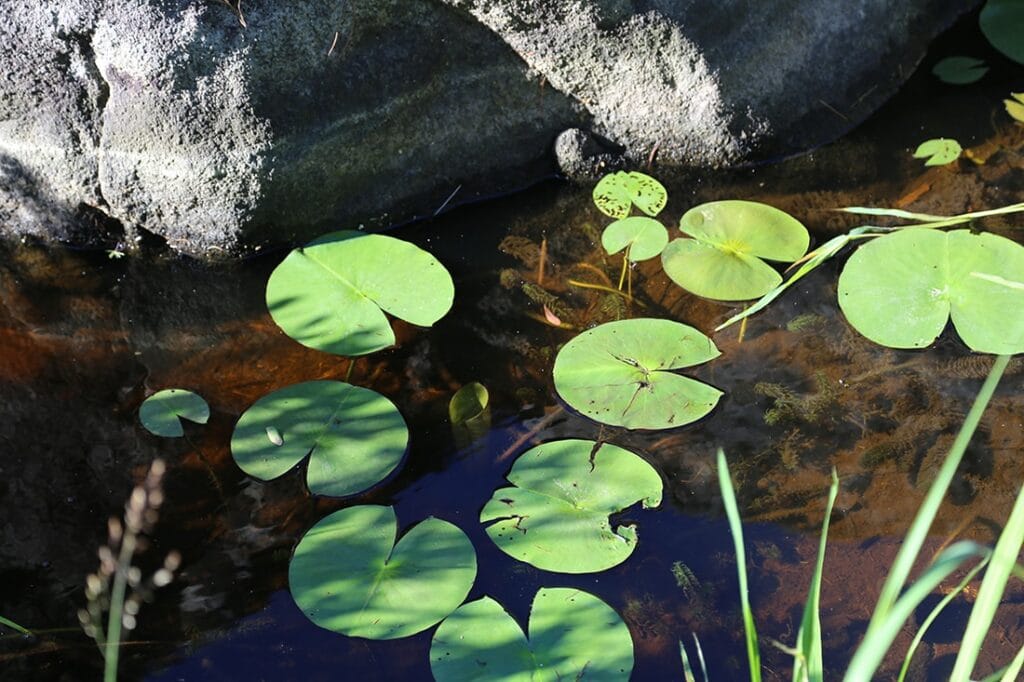
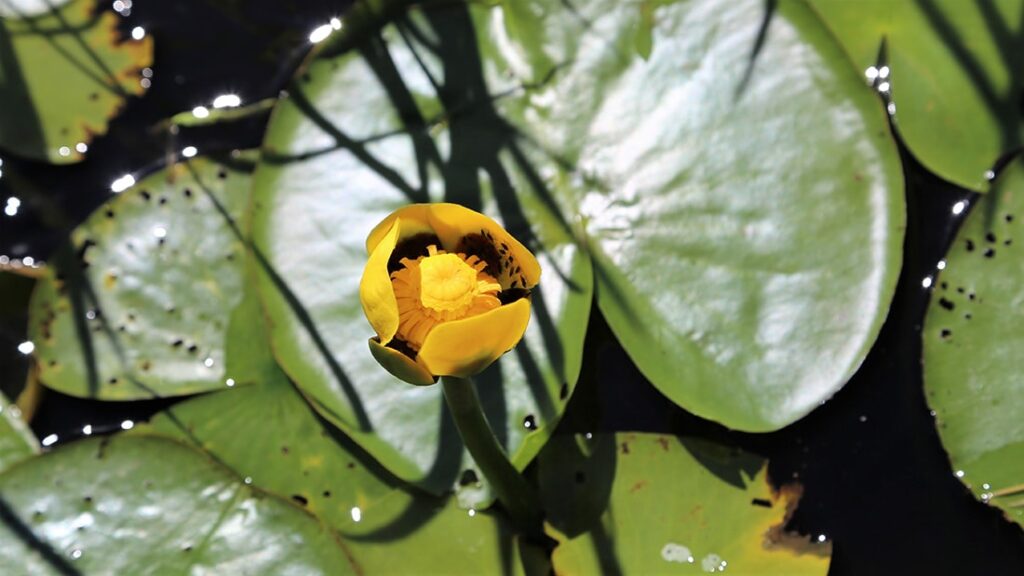
I felt the caress of a soft breeze on my face and listened to it whistle through the tree tops as it made its way along the shoreline. The top branches of each tree swayed back and forth, bowing to its neighbor to join in on the motion. The leaves on the Aspens shimmied as it passed.
In between the breezes, human laughter was faintly distinguishable somewhere on the southern corner of the lake. I was reminded that this was a US Forest Service campground where other people may be enjoying this pristine part of the world as well. I thought I’d go take a look to see what it’s like in the southern loop of campground sites 15 – 30.
The first discovery was a boat launch where two motorized boat owners were having a friendly early morning visit about walleye and small-mouthed bass. No other boats were in sight. The shoreline looked inviting for a long paddle adventure. One other camper and her black labrador were spotted walking along the gravel path. We exchanged a friendly wave. Very few tents were seen occupying the camp sites, most of which were positioned well off the road, nestled deep into the woods and wilderness.
Several reservation signs with handwritten dates of expected arrival were posted on the entrance posts to each camp site. In my opinion, this was remarkable for northern Minnesota’s beauty in mid-July. Such a pleasant and modestly-used resource for camping near the Boundary Waters.
Much to my delight, as I rounded the circular path through the grounds, two endearing and freshly built wood-framed cabins appeared on forested sites. Oh, how my aging friends would appreciate this! Once it was determined as unoccupied, it merited walking up the front steps for a peek through the window from the front porch. Simple, two-room cabins with a modest bedroom and another room with a simple table and chairs. No running water or electricity. Just a cozy and charming shelter for those who prefer it. Who needs anything more for spending a few days in the northwoods?
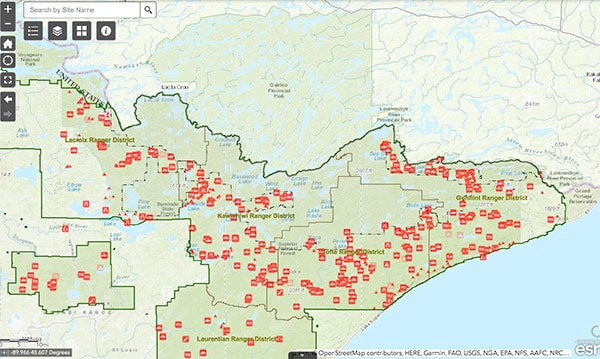
Did you know Superior National Forest has campgrounds?
Birch Lake Campgrounds is managed by the U.S. Forest Service, it’s part of the Superior National Forest which consists of three million acres of forest, water, land and trees between the Canada-United States border and the north shore of Lake Superior. There are 35 developed campgrounds in the forest, all located near a lake or body of water. The Superior National Forest also provides opportunity for backcountry sites, wilderness camping and more than 400 miles of hiking trails. Make reservations online here.
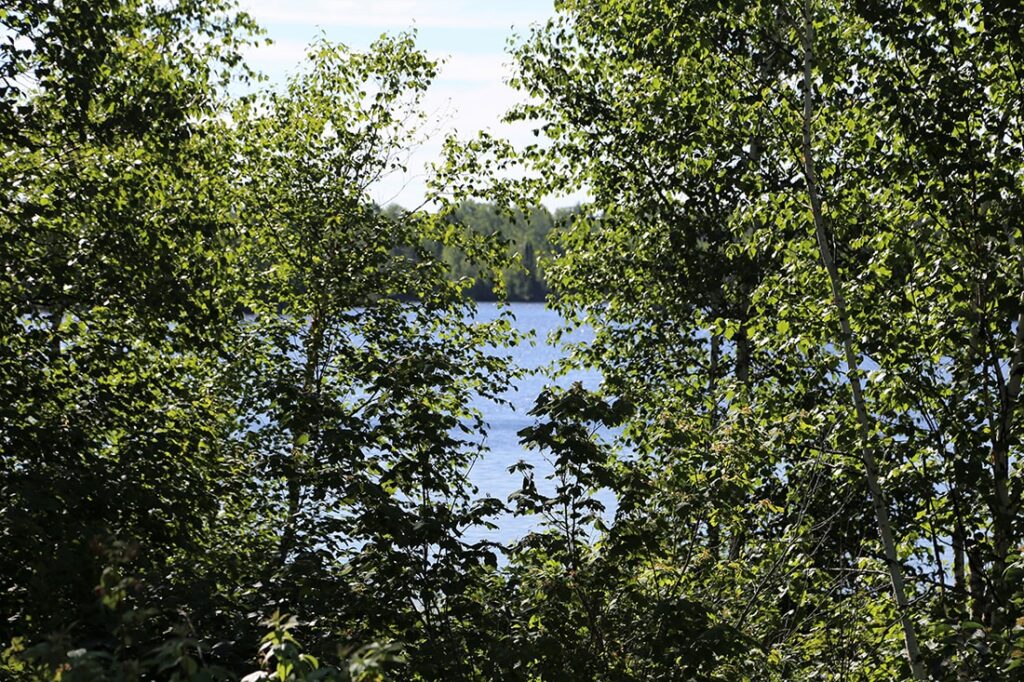
Returning to my camp site, I sat and wrote at a picnic table for a long spell, without interruption from anyone except an occasional red squirrel who came to visit. The view of the lake through the trees offered peaceful inspiration. All of the basic comforts were within reach. Fresh well water for drinking was available through a solar-powered hand-pump. A vaulted restroom in pristine condition with hand-sanitizer also made it quite civilized. Should anything more be needed, the town of Ely was eight miles away.
My time on Birch Lake was only 24-hours long. As I packed up and departed, I drove along county roads where evidence of the 1999 blowdown was on display leaving clearcut fields and devastated trees. How easy it would be to miss this oasis of 80 acres of pristine shoreline and forested backcountry surrounding Birch Lake. Reserving this time in the woods was seamless. I will be back for more. Should it fill up the next time, many other bordering lakes and rivers of the Superior National Forest were waiting to be explored.
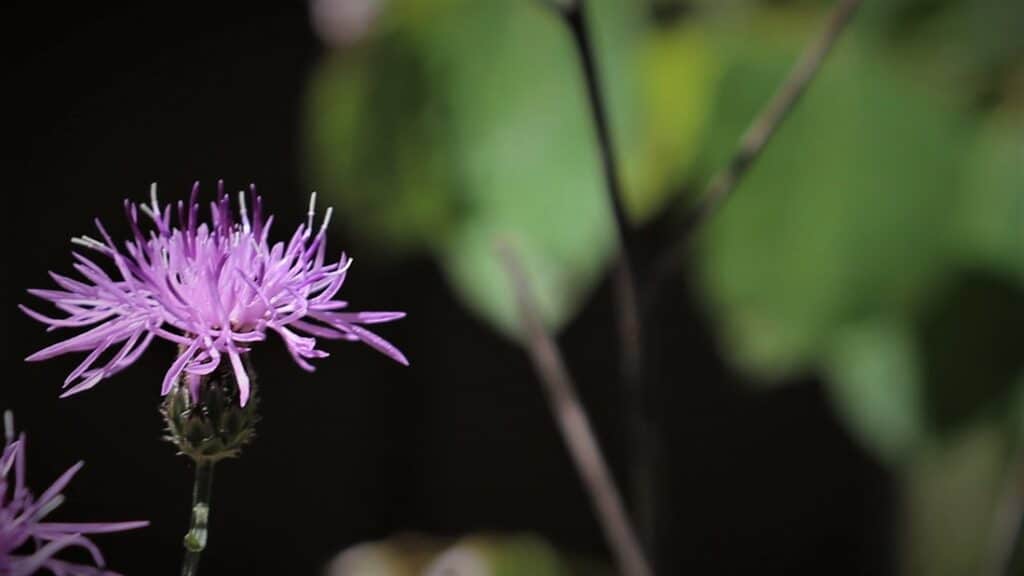
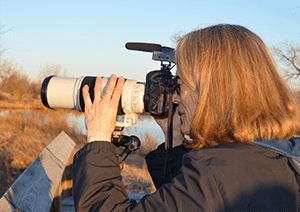
Anne Queenan is a writer/photographer/video producer who reports on natural heritage, watershed health and land stewardship. She and her dog Coda live on the Mississippi River in Minnesota where she enjoys paddling, birding and scenic hiking.


